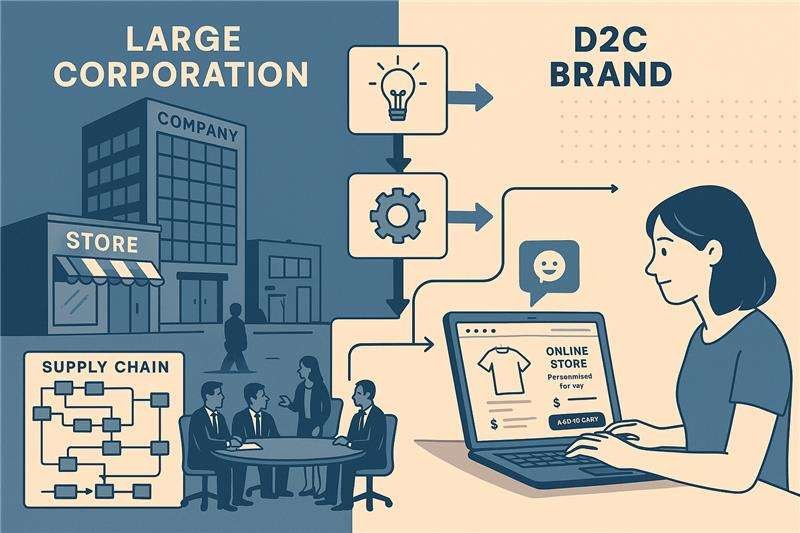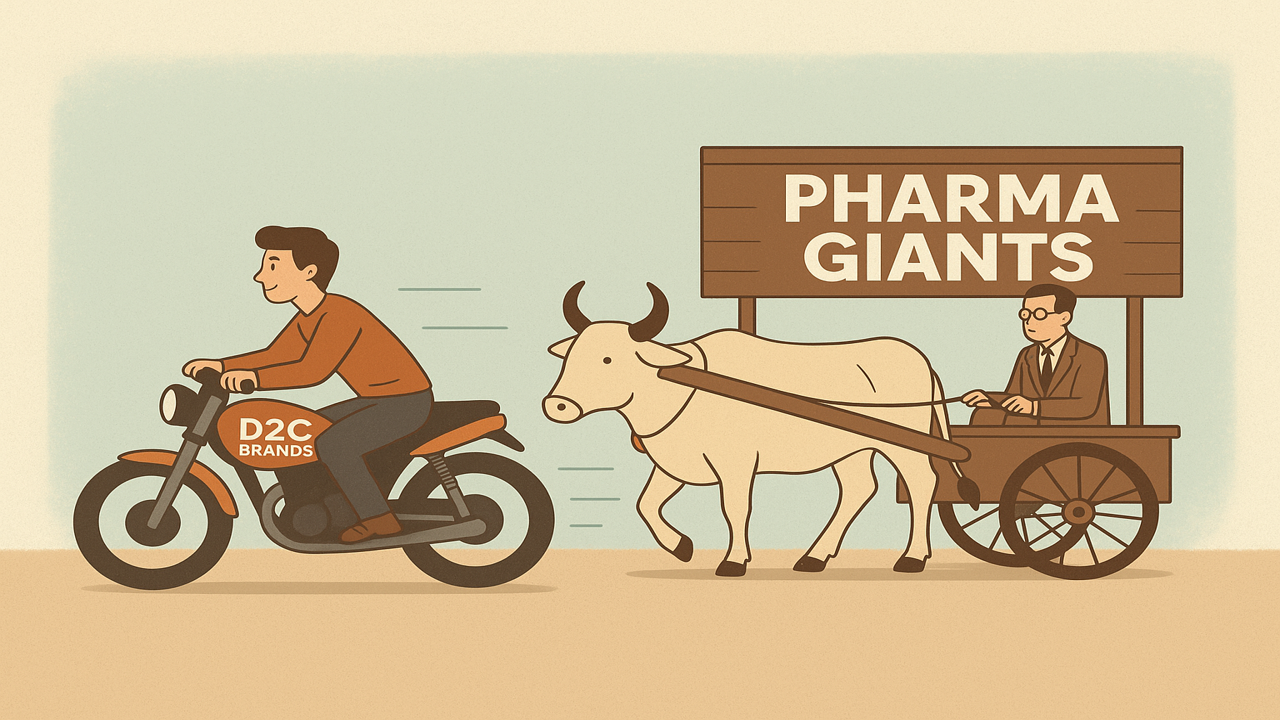In the e-commerce landscape, Direct-to-Consumer (D2C) brands have disrupted traditional retail models by focusing on agility, customer experience, and digital-first strategies. Large enterprises, with their scale and legacy systems, often struggle to match this pace. However, there are key lessons that Large Companies can adopt from D2C success stories—while also being mindful of pitfalls that may not align with their structure.

This blog explores the major takeaways for large companies and what aspects they should avoid maintaining their unique strengths.
What Large Companies Can Learn from D2C Brands
1. Hyper-Personalization & Customer-Centricity
D2C brands excel at creating a highly personalized customer journey using first-party data. Companies like Glossier and Warby Parker use customer insights to tailor product recommendations and marketing messages. Large companies can integrate AI-driven personalization in their marketing and customer service to foster stronger brand loyalty.
👉 Actionable Insight: Invest in first-party data collection and AI-driven customer analytics.
2. Rapid Experimentation & Agile Marketing
D2C brands iterate quickly, testing new product lines, pricing strategies, and ad creatives in real-time. Large corporations can adopt a more experimental mindset by using A/B testing and smaller, agile teams to drive innovation.
👉 Actionable Insight: Implement agile marketing teams to experiment with new trends before fully scaling.
3. Omnichannel Brand Storytelling
Unlike traditional companies that often separate their online and offline strategies, D2C brands create a seamless omnichannel experience. Whether through social media engagement, direct email campaigns, or immersive brand storytelling, they ensure consistency.
👉 Actionable Insight: Break down silos between marketing, sales, and digital teams to create a unified brand experience across platforms.
4. Community-Led Growth & Influencer Marketing
D2C brands build strong communities through user-generated content (UGC) and influencer collaborations. Large companies can leverage micro-influencers and community-driven initiatives to maintain brand relevance and trust.
👉 Actionable Insight: Build community-driven marketing strategies instead of relying solely on traditional advertising.
5. Subscription-Based & Retention Models
Many D2C brands focus on customer retention through subscription models (e.g., Dollar Shave Club, Birchbox). Large corporations can introduce subscription-based services to create predictable revenue streams.
👉 Actionable Insight: Experiment with subscription services for recurring revenue and customer loyalty.
What Large Companies Should NOT Copy from D2C Brands
1. Over-Reliance on Paid Social Ads
Many D2C brands scale rapidly using paid ads, but customer acquisition costs (CAC) have skyrocketed. Large companies must balance paid media with organic growth strategies like SEO, partnerships, and owned media.
🚫 Avoid: Overspending on social ads without long-term organic brand-building strategies.
2. Lean Inventory & Just-in-Time Models
D2C brands often follow a lean inventory model, producing goods on demand. However, large companies operate at a much bigger scale, making this approach risky due to supply chain complexities.
🚫 Avoid: Over-reliance on lean inventory systems that may lead to fulfillment delays at scale.
3. Limited Product Diversification
D2C brands usually focus on niche products, whereas large companies thrive on diversification. While niche positioning works for startups, big brands need broad portfolios to sustain revenue.
🚫 Avoid: Over-specializing in a single category at the expense of diversification.
4. Flat Organizational Structures
D2C brands often work with small, flat teams that allow for quick decision-making. Large enterprises, however, require structured hierarchies to manage complexity.
🚫 Avoid: Flattening hierarchies to the point of inefficiency in large organizations.
5. Relying Solely on Direct Sales
While D2C brands thrive by cutting out middlemen, large businesses benefit from multi-channel distribution—retail partnerships, marketplaces, and wholesale models.
🚫 Avoid: Ignoring established distribution networks in favor of only direct sales.
Conclusion
Large enterprises can take valuable lessons from D2C brands in terms of agility, customer engagement, and data-driven marketing. However, they must be cautious about adopting strategies that don’t align with their operational scale. The key is to merge the best of both worlds—leveraging the agility of D2C brands while capitalizing on the scale, infrastructure, and legacy of large businesses.
By blending innovative D2C strategies with their core strengths, large companies can future-proof their growth and stay ahead in the competitive e-commerce landscape.
Would you like us to help you implement these insights in your e-commerce strategy? Let’s talk!




